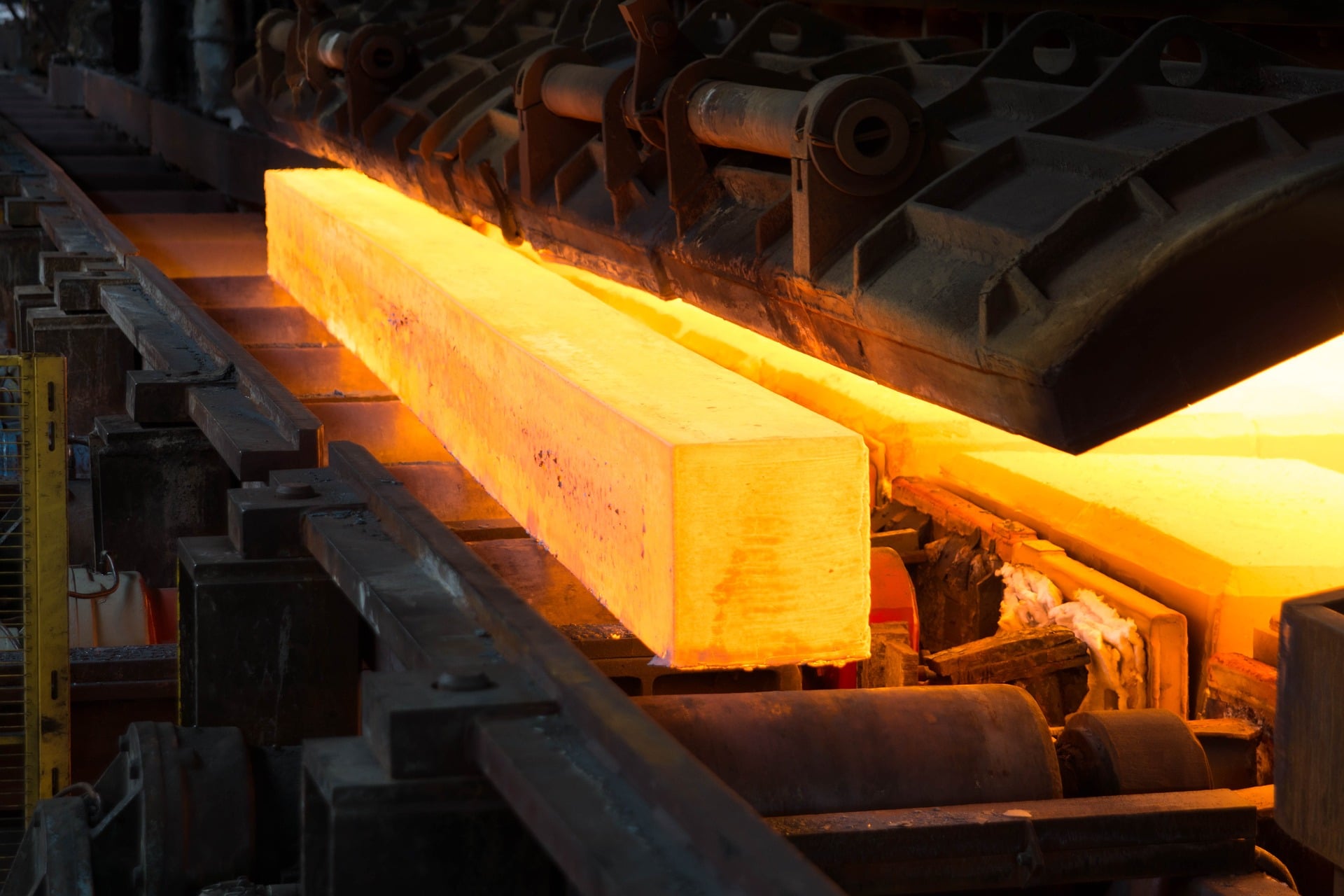Casting and forging are two different methods of metal fabrication. Both processes have been
around for thousands of years, but what are the differences between the two metalworking
methods?
What is Casting?
Casting is the process of pouring molten metal into a mold or die and allowing it to cool and harden so that it takes the shape of the mold. The process is ideal for mass-production of parts with the reuse of the same mold to create identical products.
There are several different types of casting. Die-casting is when liquid metal is forced into a die instead of a mold, and there the applied pressure keeps it in place until it hardens. This process is known for the high-speed applications it supports. Permanent mold casting involves pouring the molten metal into a metal mold, using gravity or a vacuum to fill the mold. Permanent mold casting can create stronger castings than die casting, but they can be difficult to remove from the final product. For this reason, semi-permanent mold castings are also available. These molds have expendable cores, making them more manageable and less costly to remove.
The final casting process is sand casting. With sand casting, castings are made by pressing a pattern into a fine mixture of sand. This forms a mold for the molten metal to be poured into. This process is slow but is generally more economical than the other forms of casting. It is also good to use when intricate designs are needed, or for large metal fabrication.
What is Forging?
Forging uses compressive force to shape metal. A hammer or die strikes the metal workpiece until the desired shape is formed. The pounding action of forging deforms and shapes the metal, which results in unbroken grain flow, which allows the metal to retain its strength.
Ancillary effects of this unique grain flow include the elimination of defects, inclusions, and porosity in the product. Another advantage of forging is the relatively low costs associated with moderate and long production runs. Once the forging tools have been created, products can be manufactured at relatively high speeds with minimal downtime.
If forging is done with the metal at room temperature, it is called cold forging. Forging can also be performed with the metal heated to a range of above room temperature to below the recrystallization temperature and is then called warm forging. When the metal is heated to its recrystallization temperature, which varies by metal, the process is called hot forging. Forging is one of the oldest types of fabrication, with blacksmiths using forging centuries ago.
What’s the Difference Between Casting and Forging?
Forging creates metal products with generally higher strength that are typically tougher than metal processed in castings. Metal forgings are less likely to shatter at contact with other objects. The increased strength is a consequence of how the metal is forced into a new shape, by pressing or by hammering, during forging. As opposed to other methods of fabrication, the metal’s grain is stretched in this process, aligning in one direction instead of randomly. By the end of the forging process, the resulting metal is stronger than it would have been had it been cast.
However, forging has size limitations. Shaping metal is more difficult with forging since the process keeps the metal in a solid-state, unlike casting. Since altering the metal’s shape is more difficult with forging, there’s a limit on the size and the thickness of metal for forging. The larger the metal section being worked on, the harder it is to forge.
With casting, molten metal flows into a cavity in a mold or die, which allows for more complex shapes to be easily produced. Practically any material can be cast, and products up to 200 tons can be created. Casting is often much cheaper than forging. Both casting and forging have theiradvantages and disadvantages, so the better method depends upon what is being fabricated.
Advantages of Forging over casting :-
Forging produces a stronger and tougher piece of metal, with a tighter grain pattern. However it’s more costly, has some shape limitations, and it can be harder to achieve high tolerances on forged parts.
Casting, on the other hand, is able to be used to create large or complex metal components.
Nowadays, both forging and casting are mostly done in an industrial environment using modern equipment.
Tougher end product:-
Forging results in a generally tougher end product than casting does. Especially when it comes to impact and shear strength. The forging process causes the grain flows in the metal to conform to the shape of the product, providing an overall tighter grain, and therefore a more uniform structure and composition.
That makes forged products harder and more resistant to wear. That can eliminate the need to use more expensive alloys to increase the strength of parts you’re making.
Stays more true to form:-
Forging results in less shrinkage, cavities, and overall porosity of the metal. You don’t need to compensate for the sorts of changes that happen during the casting process.
Less weak points in the end product:- Forging reduces the need to join multiple pieces together.
Instead, it can all be forged as one piece. Removing unnecessary joints adds to the overall strength of a piece, since no welding or fastening is needed.
Usable in many industries:-
Forged products include everything from aircraft landing rods, gears and crankshafts in cars and trains, and even small tools and items like rivets, chisels, and screws.



